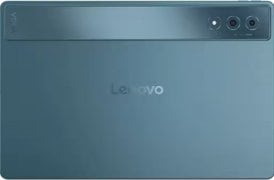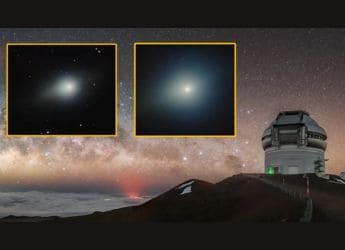- Home
- Science
- Science News
- NASA Develops Robotic Technologies for Autonomous Exploration of Ocean Worlds
NASA Develops Robotic Technologies for Autonomous Exploration of Ocean Worlds
NASA’s OWLAT and OceanWATERS technologies are preparing autonomous landers for exploration of ocean worlds like Europa and Enceladus

Photo Credit: NASA
Artist’s concept image of a spacecraft lander with a robot arm on the surface of Europa
NASA is advancing technologies for autonomous spacecraft designed to explore “ocean worlds,” such as Europa and Enceladus, two of the most promising candidates for extraterrestrial life. According to a NASA report, the Ocean Worlds Lander Autonomy Testbed (OWLAT) and Ocean Worlds Autonomy Testbed for Exploration, Research, and Simulation (OceanWATERS) are key initiatives for enhancing robotic missions capable of operating in these challenging environments.
Both OWLAT, developed at the Jet Propulsion Laboratory (JPL), and OceanWATERS, created at Ames Research Center, simulate lander operations under low-gravity and icy surface conditions. OWLAT includes a physical testbed with a robotic arm and tools for sampling, while OceanWATERS offers a virtual environment replicating Europa's conditions. These systems aim to prepare robotic missions for long communication delays, harsh terrain, and limited energy resources.
The Role of OWLAT and OceanWATERS
OWLAT, featuring a Stewart platform for simulating low-gravity dynamics, enables real-world testing of lander hardware and software. It includes force sensors, a robotic arm, and interchangeable tools for sampling. The system's autonomy software ensures operations remain within safety bounds while executing commands via a Robot Operating System (ROS) interface.
OceanWATERS, a simulation-based system, provides a virtual landscape where autonomous decision-making algorithms are tested. Using Europa-like terrain models, it evaluates sample collection, terrain interaction, and energy efficiency. Fault injection tools allow researchers to simulate and resolve potential system failures.
Collaborative Research Outcomes
Research teams funded by the Autonomous Robotics Research for Ocean Worlds (ARROW) and Concepts for Ocean Worlds Life Detection Technology (COLDTech) programmes have utilised these platforms. According to NASA, projects ranged from fault-detection mechanisms by Dr Eric Dixon of Lockheed Martin to terrain-adaptive autonomy led by Dr Melkior Ornik at the University of Illinois.
These developments, as noted in official publications, mark progress towards self-reliant landers capable of probing icy moon surfaces and potentially uncovering signs of life.
Get your daily dose of tech news, reviews, and insights, in under 80 characters on Gadgets 360 Turbo. Connect with fellow tech lovers on our Forum. Follow us on X, Facebook, WhatsApp, Threads and Google News for instant updates. Catch all the action on our YouTube channel.
Related Stories
- Samsung Galaxy Unpacked 2025
- ChatGPT
- Redmi Note 14 Pro+
- iPhone 16
- Apple Vision Pro
- Oneplus 12
- OnePlus Nord CE 3 Lite 5G
- iPhone 13
- Xiaomi 14 Pro
- Oppo Find N3
- Tecno Spark Go (2023)
- Realme V30
- Best Phones Under 25000
- Samsung Galaxy S24 Series
- Cryptocurrency
- iQoo 12
- Samsung Galaxy S24 Ultra
- Giottus
- Samsung Galaxy Z Flip 5
- Apple 'Scary Fast'
- Housefull 5
- GoPro Hero 12 Black Review
- Invincible Season 2
- JioGlass
- HD Ready TV
- Laptop Under 50000
- Smartwatch Under 10000
- Latest Mobile Phones
- Compare Phones
- Redmi Note 15 5G
- Redmi Note 15 Pro 5G
- Redmi Note 15 Pro+ 5G
- Lava Play Max
- Poco C85 5G
- Honor Magic 8 Lite
- Jolla Phone
- Realme P4x 5G
- Asus ProArt P16
- MacBook Pro 14-inch (M5, 2025)
- OnePlus Pad Go 2
- Poco Pad M1
- Just Corseca Skywatch Pro
- Honor Watch X5
- Acerpure Nitro Z Series 100-inch QLED TV
- Samsung 43 Inch LED Ultra HD (4K) Smart TV (UA43UE81AFULXL)
- Asus ROG Ally
- Nintendo Switch Lite
- Haier 1.6 Ton 5 Star Inverter Split AC (HSU19G-MZAID5BN-INV)
- Haier 1.6 Ton 5 Star Inverter Split AC (HSU19G-MZAIM5BN-INV)

















